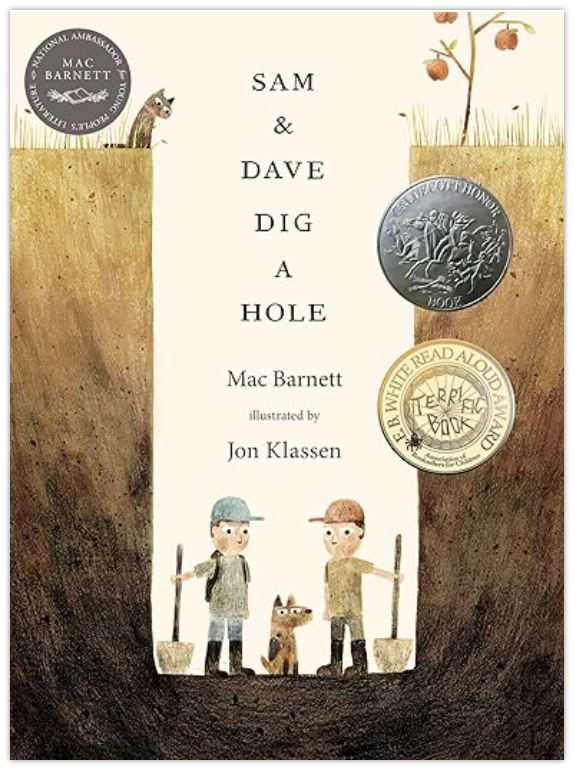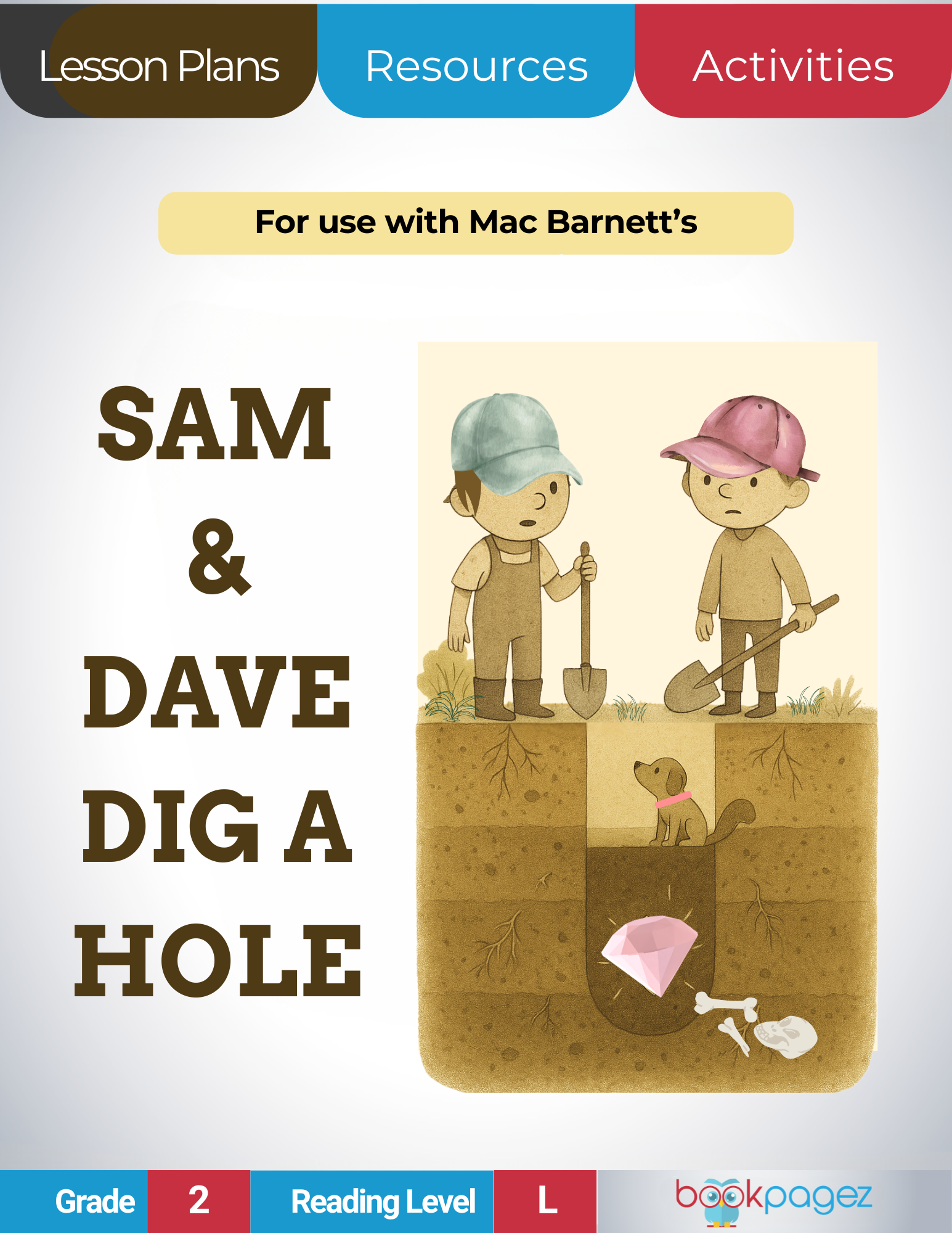
Use Sam and Dave Dig a Hole by Mac Barnett to strengthen your students' comprehension skills, build their vocabulary, and help them understand how words work.
Sam & Dave Dig a Hole by Mac Barnett and Jon Klassen follows two determined boys and their curious dog as they set out to dig until they find "something spectacular." Each time they change course, the boys miss enormous jewels hidden just out of sight, leaving readers to wonder what they'll find at the end of their adventure. This clever story offers rich opportunities for students to practice Making Inferences, Identifying the Author's Purpose, and Determining Importance as they pay close attention to both text and illustrations.
This resource set also includes a word work lesson on words with double consonants, a creative extension activity, and teaching resources designed to help students uncover the deeper meaning of the boys' unusual journey.
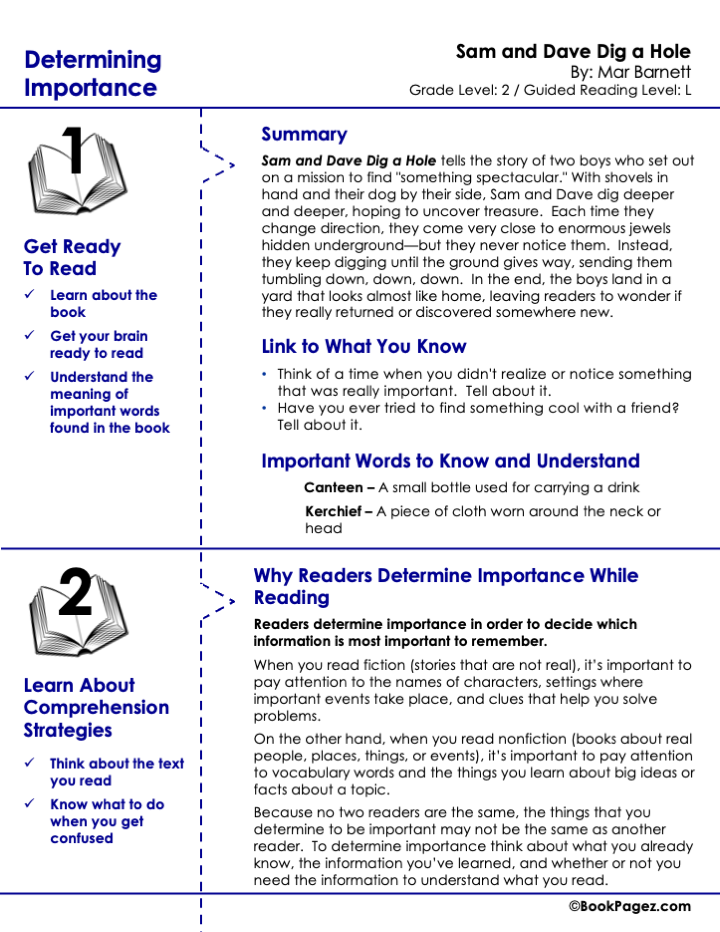
Klassen's illustrations show both important and less important details—giant hidden jewels, a digging dog, and ordinary patches of dirt. Students learn to identify which details are most critical to understanding the story's meaning and message. By focusing on the most important elements, readers can see how the boys' choices and the dog's actions shape the outcome of their adventure.
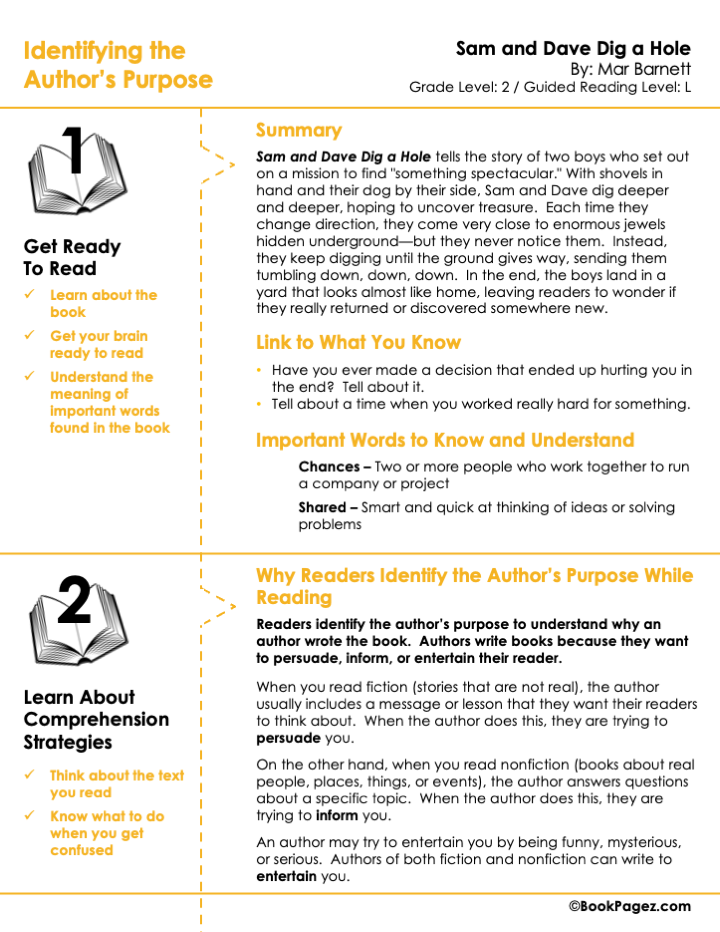
The unusual ending of Sam & Dave Dig a Hole makes students stop and think: Did the boys return home, or did they find somewhere new? This open-ended question encourages readers to reflect on why the author chose to leave the story unresolved. By considering Barnett's purpose, students learn that stories can be written to spark curiosity, invite discussion, and encourage multiple interpretations.
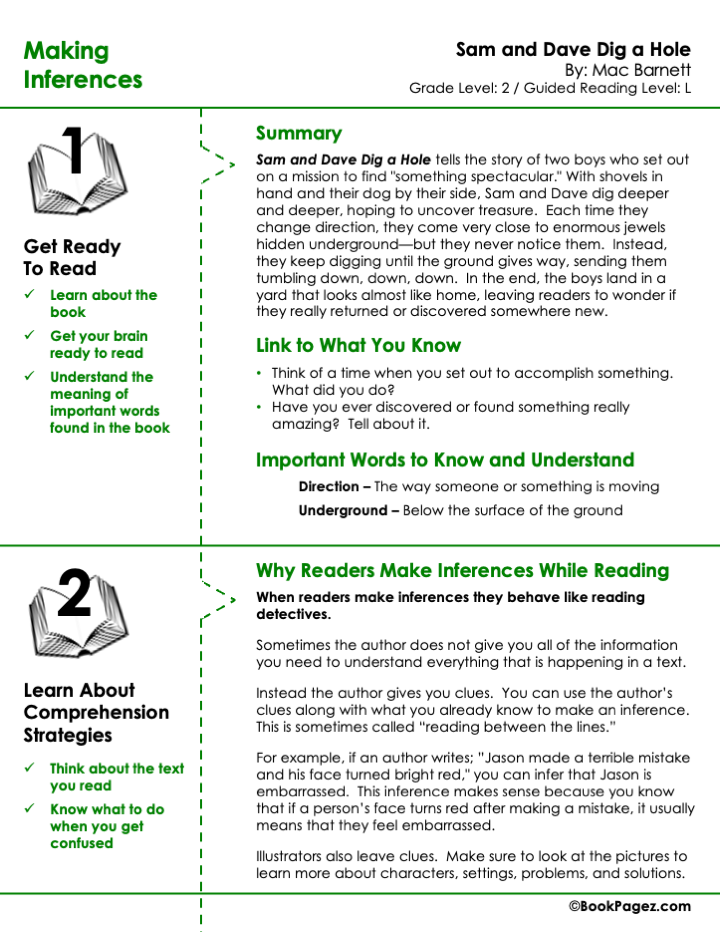
Mac Barnett and Jon Klassen carefully use words and illustrations that require readers to "read between the lines." Students can make inferences about what the boys are missing underground, the dog's attention to hidden treasures, and what may have happened at the end of the story. Each detail provides practice in connecting clues from text and pictures to form deeper understanding.
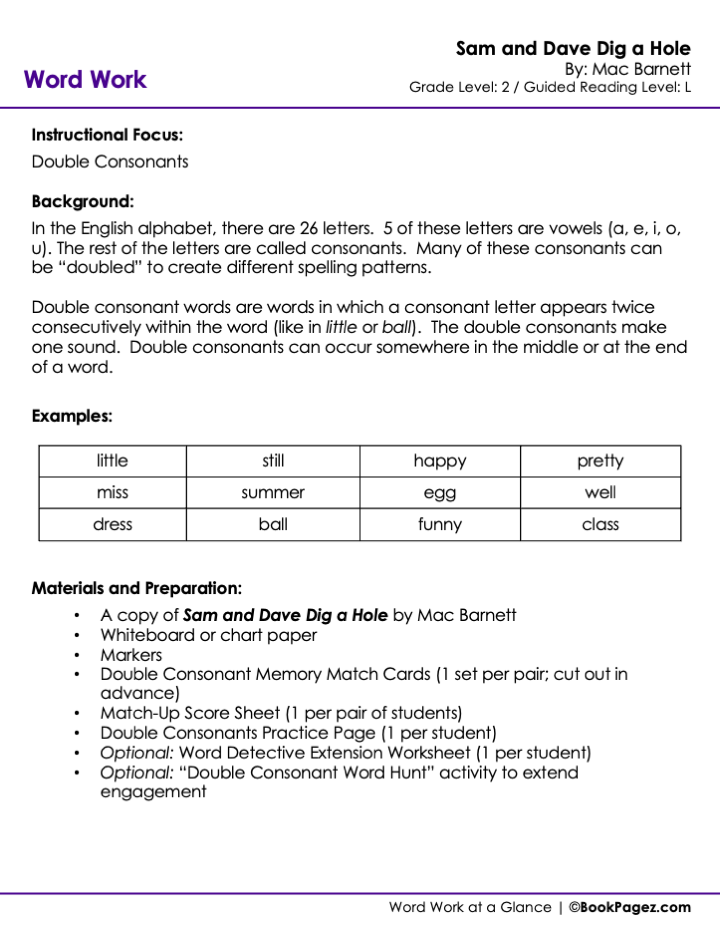
This word work lesson plan and set of teaching resources use Sam and Dave Dig a Hole by Mac Barnett as a springboard for instruction focused on double consonants.
By anchoring word study to the text, students will benefit from seeing how double consonants are used within the story before engaging in both guided and independent practice with consonant patterns.
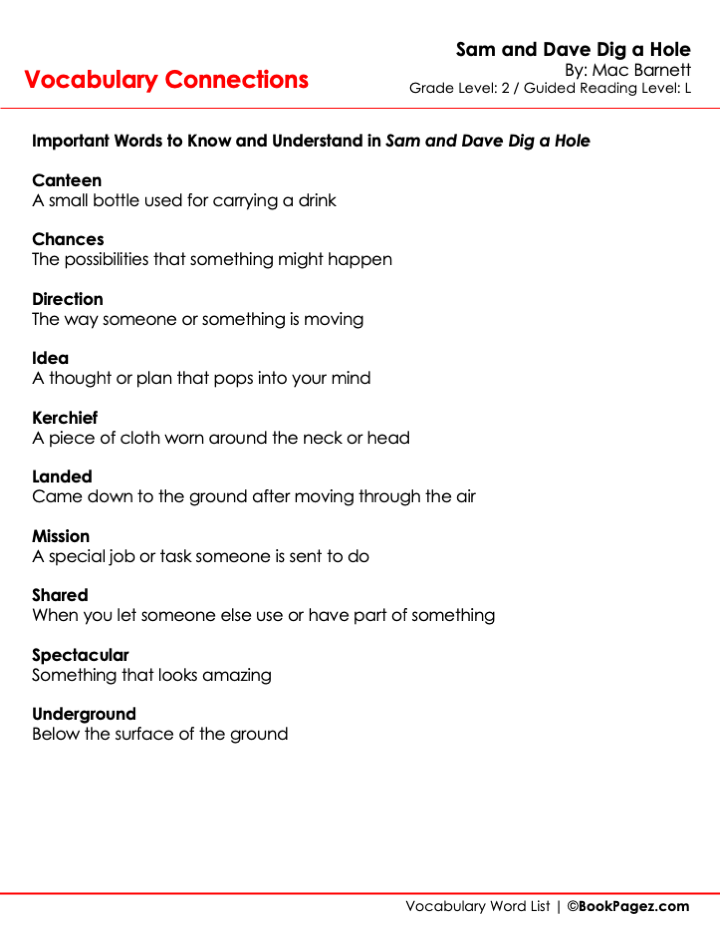
This set of vocabulary development resources for Sam and Dave Dig a Hole highlights the key words that are most important for students to understand while reading the story. Through engaging activities—such as word games, matching words to definitions and pictures, and categorizing vocabulary—students will build the language skills they need to comprehend this story and many others with confidence.
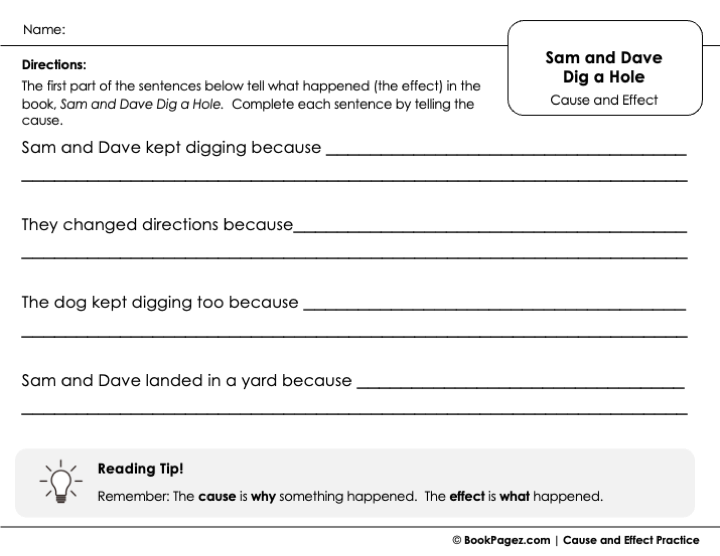
Understanding cause and effect is a key comprehension and language skill. The text structure of Sam and Dave Dig a Hole includes several examples of cause and effect relationships, making it easy to use as a springboard for modeling or independent practice.
This simple resource includes four sentence stems. Each sentence stem presents an effect. Students will use what they know about the book to fill in the cause of the effect.
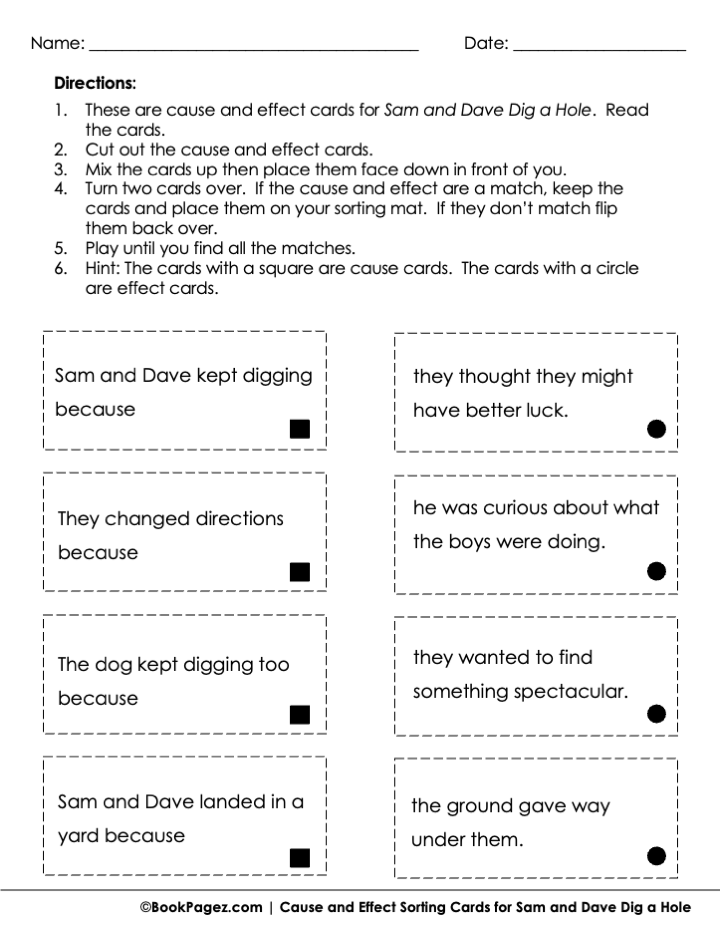
Read Sam and Dave Dig a Hole then have some fun matching cause and effect sentences from the book. By using these cause and effect cards, students will demonstrate both their comprehension of the text and their understanding of cause and effect relationships in a hands-on and interactive way.
This resource includes matching/sorting cards and a sorting mat for four cause and effect sentences in Sam and Dave Dig a Hole. Each cause card is marked with a square, and each effect card is marked with a circle, making it easy to support students who struggle with matching cause and effect relationships.
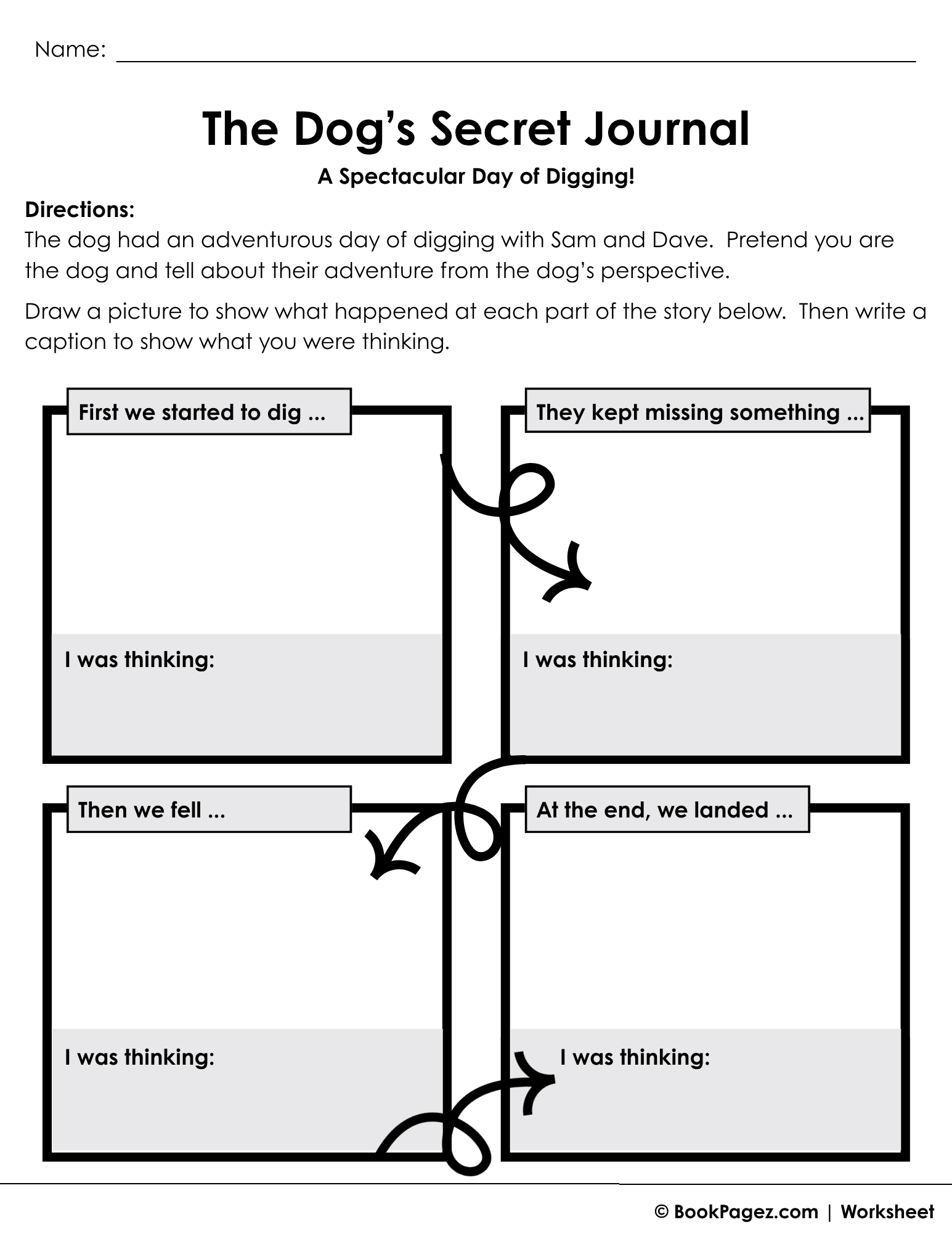
In Sam and Dave Dig a Hole by Mac Barnett, students explore the story from a new point of view by writing as the dog. In this creative comprehension activity, students draw and caption key parts of the adventure to show what the dog might have been thinking. This task helps students practice perspective-taking, sequencing, and expressive writing while deepening their understanding of the story's clever twist.
